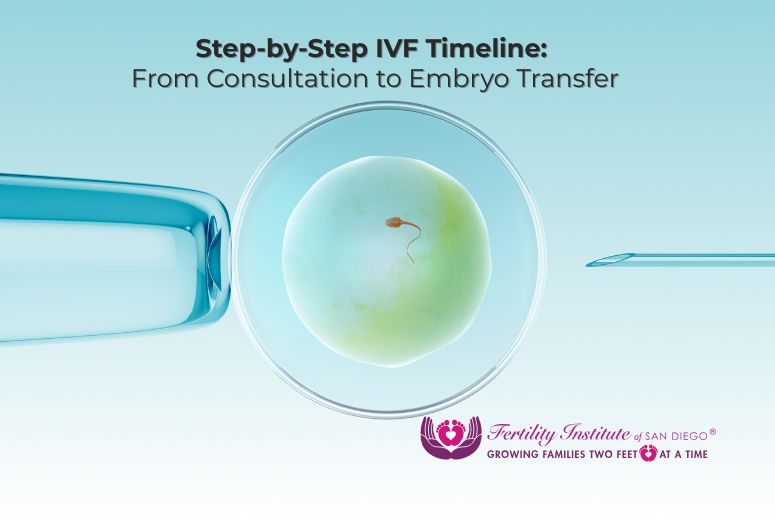The California fertility coverage mandate, officially known as SB 729, is a groundbreaking piece of legislation that expands access to fertility care through state-mandated fertility coverage. Set to take full effect in 2026, this law requires large-group insurance plans and public employers in California to cover in vitro fertilization (IVF) and fertility preservation services as medically necessary.
This progressive move closes a long-standing gap in fertility insurance California offerings, ensuring that reproductive care isn’t just a privilege—but a right.
“The passage of SB 729 represents a pivotal shift in reproductive health equity,” says Dr. Minoos Hosseinzadeh, founder and medical director of the Fertility Institute of San Diego. “It allows patients—regardless of sexual orientation or relationship status—access to the fertility treatments they deserve.”
How SB 729 Fertility Law Works
SB 729 redefines infertility under California law to include “a person’s inability to reproduce either as an individual or with their partner without medical intervention.”
This expanded definition not only identifies infertility as a medical diagnosis but also ensures LGBTQ fertility coverage and single individuals are no longer excluded from access to care due to antiquated policy definitions.
Employers with large-group insurance policies will be mandated to include fertility treatment insurance coverage, including IVF insurance California, egg freezing for medical necessity, and associated reproductive services.
Why This Law Matters
Infertility affects an estimated 1 in 8 couples, yet the high cost of fertility treatments has historically placed them out of reach for many. An average IVF cycle in California can range from $12,000 to $20,000, not including medications or additional services like ICSI or PGT.
SB 729 lifts a significant financial burden and signals a cultural and legislative recognition of fertility care access as an essential component of reproductive health benefits.
“This law means fewer heartbreaking compromises,” Dr. Hosseinzadeh explains. “Patients won’t have to choose between their dream of parenthood and their financial stability.”
Who Benefits from SB 729?
This legislation is designed with inclusivity in mind. Those who will benefit include:
- Heterosexual couples experiencing infertility
- Same-sex couples seeking family-building insurance
- Single individuals preserving fertility for future use
- Cancer patients requiring fertility preservation before treatment
- Employees of California-based large-group employers and public institutions
In essence, SB 729 opens the door to parenthood for a much broader demographic, including those traditionally overlooked by existing insurance models.
When Will It Take Effect?
The fertility coverage 2026 timeline is set to begin January 1, 2026, for all newly issued large-group health plans. However, advocacy efforts continue to encourage earlier adoption by some insurers and employers.
Patients and clinics are encouraged to begin preparing now by learning about California fertility legislation and working with providers to understand their current coverage.
Key Challenges and Complications
While the law is comprehensive, challenges remain:
- Small-group plans and individual policies are currently excluded
- Out-of-pocket costs may still apply for services deemed “non-essential”
- Employers may require time to implement the changes
These limitations highlight the importance of selecting a fertility clinic California patients trust—one that’s proactive in working with insurance carriers and committed to patient advocacy.
Types of Treatment Covered
SB 729 covers a broad spectrum of mandated fertility benefits, including:
- Diagnostic testing for infertility
- Medically necessary IVF treatment (Specific clinical requirements for coverage are still being finalized)
- Embryo freezing
- Egg and sperm freezing for medical indications
- Uterine embryo transfer
- Hormonal therapy for ovulatory dysfunction
These additions make the scope of state-mandated fertility coverage one of the most generous in the nation.
Costs and Insurance Strategy
Though SB 729 mandates insurance coverage, understanding the financial side remains essential:
- Patients should review their employer fertility benefits
- Consult with a clinic like FISD that offers financial counseling & insurance coverage review prior to treatment start
- Consider fertility savings programs and financing options for non-covered services
A Personalized Approach to Fertility Advocacy
At the Fertility Institute of San Diego, patients receive a deeply personal, one-on-one experience directly with Dr. Hosseinzadeh. Her boutique-style practice allows for tailored care that adjusts to each patient’s medical, emotional, and financial needs.
“Legislation like SB 729 empowers us to treat patients who wouldn’t have access to care without it,” says Dr. Hosseinzadeh. “It lets us be clinicians first—and advocates always.”
Action Steps for Patients
To prepare for the upcoming infertility coverage law, consider the following:
- Request a coverage review from your HR or benefits administrator
- Schedule a consultation with a fertility specialist to begin diagnostic work
- Preserve fertility early if facing a medical diagnosis or age-related decline
- Ask your provider if they are experienced with navigating new laws like SB 729 California
Frequently Asked Questions (FAQs)
SB 729 is California’s fertility insurance mandate that takes effect January 1, 2026, requiring large-group insurers to cover fertility care, including IVF.
Yes. The new law redefines infertility to include anyone unable to conceive without medical help—regardless of marital status, gender, or sexual orientation.
No. SB 729 currently applies only to large-group health plans and public employers. Small-group and individual policies are not yet required to comply.
Yes, when deemed medically necessary, including cases like cancer treatment or other fertility-threatening conditions.
Start by speaking with your employer’s HR department and book a consultation with a clinic like Fertility Institute of San Diego to map out your next steps.
















